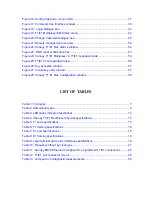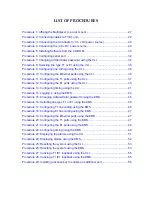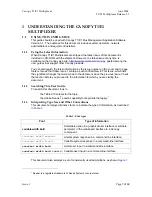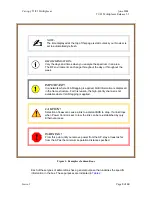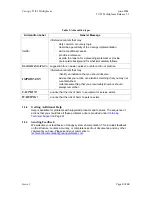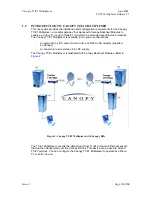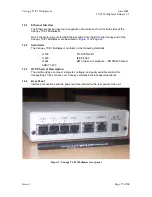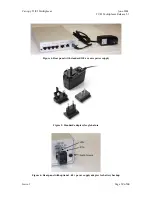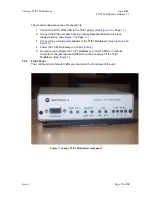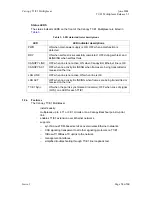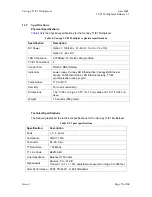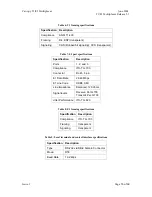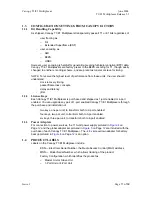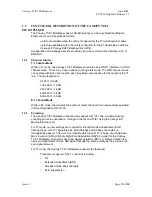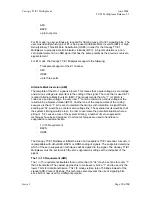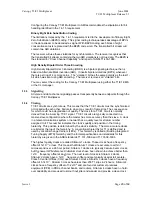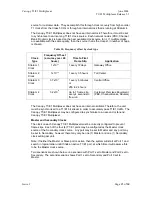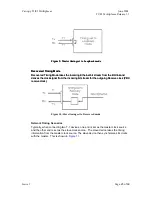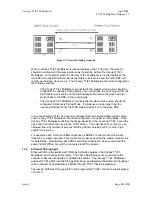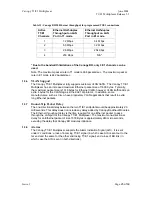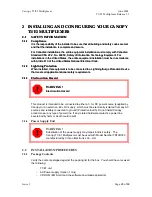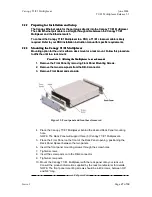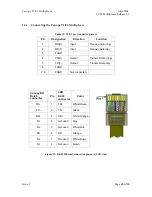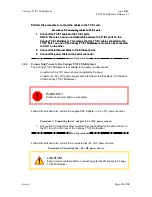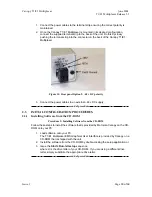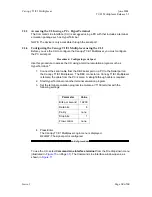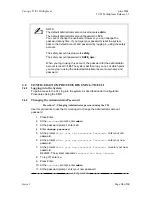
Canopy
T1/E1
Multiplexer
June
2004
T1/E1
Multiplexer
Release
3.1
19 of 69
◦
AMI
◦
B8ZS
◦
up to four ports
For E1 mode, no user settings are required for framing types or for E1 signaling bits. The
user must identify which type of E1 is being used; Alternate Mark Inversion (AMI) or High
Density Binary Three Bit Zero Substitution (HDB3) in order for the Canopy T1/E1
Multiplexer to properly ascertain bipolar violations (BPV). A bipolar violation is a non-
zero signal element in an AMI signal that has the same polarity as the previous non-zero
signal element.
For E1 mode, the Canopy T1/E1 Multiplexer supports the following:
◦
Transparent support of the E1 channel
◦
AMI
◦
HDB3
◦
up to three ports
Alternate Mark Inversion (AMI)
The template of the DS-1 signal is bipolar. This means that a plus voltage, a zero voltage,
and a minus voltage are important to the coding of the signal. The code that is used in T1
is called Alternate Mark Inversion (AMI). The requirement is that if a “1” (or Mark) is
coded as a positive voltage, the very next “1” must be coded as a minus voltage or the
result will be a bipolar violation (BPV). Another one of the requirements of the coding
sequence is that a “1” bit is sent to maintain the timing synchronization. A signal that is
sending all “0s” would be a constant zero voltage line. The eventual result would be that
the system’s timing would be lost. In order to overcome the potential situation where a
string of “0s” causes a loss of the system’s timing, a number of zero suppression
techniques have been designed. Common techniques are used to handle zero
suppression requirements are:
◦
1 in 15 Requirement
◦
B8ZS.
◦
HDB3
The Canopy T1/E1 Multiplexer fulfills the role of a transparent T1/E1 extender. As such, it
is compatible with either AMI, B8ZS, or HDB3 coding of signals. The endpoints determine
which of the zero suppression techniques will be applied to the signal. The Canopy T1/E1
Multiplexer must be set to match the zero suppression settings at the endpoints of the
signal.
The 1 in 15 Requirement (AMI)
The 1 in 15 requirement stipulates that no more than 15 “0s” may be sent be for every “1”
that is transmitted. The easiest approach is to make every bit 8 a “1” and to use only the
lower 7 bits for data transmission. This 7/8 mode yields a rate of 56 kbps instead of the
standard DS-0 rate of 64 kbps. This technique also prevents the use of signaling bits
since bit 8 is now used for a different purpose.
Issue
1
Page

